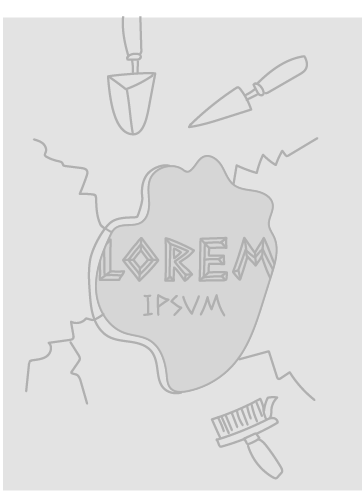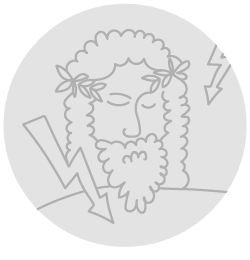Title of the work
Country of the First Edition
Country/countries of popularity
Original Language
First Edition Date
First Edition Details
Simon Spence, Theseus, "Early Greek Myths" Book 6. Createspace (Independent Publishing Platform), 2017, 36 pp.
ISBN
Official Website
earlymyths.com (accessed: October 12, 2019).
createspace.com (accessed: October 12, 2019).
Genre
Illustrated works
Myths
Retelling of myths*
Target Audience
Children (4+)
Cover

We are still trying to obtain permission for posting the original cover.
Author of the Entry:
Sonya Nevin, University of Roehampton, sonya.nevin@roehampton.ac.uk
Peer-reviewer of the Entry:
Susan Deacy, University of Roehampton, s.deacy@roehampton.ac.uk
Elizabeth Hale, University of New England, ehale@une.edu.au

Colm Lawton (Illustrator)

Portrait, courtesy of the Author.
Simon Spence (Author)
Simon Spence studied at University College Dublin before completing a PhD at the University of Nottingham. An adapted version of his PhD thesis is available as The Image of Jason in Early Greek Myth:An Examination of Iconographical and Literary Evidence of the Myth of Jason Up Until the End of the Fifth Century B.C. (self-published via Createspace, 2010). Simon Spence launched the Early Myths series in 2013.
Bio prepared by Sonya Nevin, University of Roehampton, sonya.nevin@roehampton.ac.uk
Summary
Theseus is part of a series of storybook myths aimed at very young readers. Each two-page spread combines a full-page illustration and a page of text. The text is presented in an informal style, in a Comic Sans-like font, while the illustrations present the characters as wide-eyed and childlike. The story begins with an introduction to Theseus, including the information that ion that he grew up without his father. We learn that Theseus eventually became strong enough to lift the rock that covered tokens left by his father to identify him. Athena helped him. He travelled towards Athens and had to be very brave to keep safe on the journey. The first 'menacing' person he met was "the evil club-bearer, Periphetes" (p. 4). Theseus overcame him. Then he encountered "sneaky Sinis" (p. 6), who tied people to trees to fling them across a valley. Next he saw the Sow of Krommyon – a "pig-beast". He avoided being trampled and struck the pig with his sword (p. 8). Soon he met Skiron. Skiron asked Theseus and other travellers for help washing feet. When Theseus went to help him, Skiron tried to kick him off a cliff. Theseus managed to thrown Skiron off instead. Athena appeared to encourage Theseus. She advised him to use his strength and his mind. Kerkyon the wrestler blocked his path. Theseus tried to avoid fighting but he was compelled. Theseus lifted Kerkyon in the air then dumped him on the ground, winning the contest.
Once Theseus arrived in Athens he was recognized by his father, the king. Other princes were jealous and tried to poison Theseus. King Aegeus saw the princes' "devious look" (p. 14) and saved Theseus. The king then told Theseus a "sad tale" – there had been an accident that killed a prince of Crete, to whom the Athenians must now they pay back with 7 boys and 7 girls a year. Theseus begged to be one of the boys who went so that he could stop the yearly homage. His father asked him to fly a white sail if he comes home successful. Aegeus hoped to see white sail soon.
Theseus meets Minos and Ariadne. Theseus will go in to the labyrinth first. The narrator explains what the labyrinth and the Minotaur are. Ariadne begins to fall for Theseus and hatches a plan. Ariadne gives him a sword and some string and tells him what to do with the string. Theseus meets the Minotaur and keeps leaping over it until it gets tired. He winds the string back up and exits the labyrinth. Ariadne warns him that they must leave quickly to escape Minos' reaction. She goes with the others. Athena decides that Ariadne will not go with Theseus to Athens – "their lives were not meant to be together"; "playful god Dionysus" takes Ariadne away to "celebrate" with his friends (pp. 23–24).
Theseus then forgot to change his sails. Aegeus saw the black sails and thought that Theseus had died on Crete. He "fell from the walls of the city with a broken heart" (p. 26). Theseus went on further adventures. He went to the Underworld with his silly friend Perithoos who thought that he could marry Persephone. Hades heard their plan and magically bound them to chairs. Theseus' friend, Herakles, came past to borrow Cerberus and he freed them. Now there was trouble in Athens. It is now "time for him to become their king"; he makes the city great and successful and important and he founds a "great parade". Theseus is king of "the greatest city in the world" (p. 30).
The narrative is followed by Some interesting notes for grown-ups (pp. 32–35). This section discusses the myth briefly and refers to the Theseus myth as the story of the "foundation of a city". It notes parallels with the myths of Jason, Perseus and Herakles: trials to be overcome, multiple skills needed. The use of ancient vase images as inspiration for the book's illustrations is then shown.
Analysis
Theseus takes an ambitious approach to this myth-cycle by including a great number of episodes in Theseus' life beyond the famous quest to Crete tackle the Minotaur. As the book is aimed at a very young audience, this creates its own challenge as it necessarily means that there is a lot of fighting, which some may find inappropriate for a young readership. The author has tackled this by softening the violence that is included. So, for example, Periphetes is left "dazed" when Theseus hits him; he is not explicitly said to have been killed (p. 4). The sow "collapsed quietly" after being struck with a sword (p. 8); children may read into that that the sow has been killed, but it may go over the heads of younger readers (or listeners). The children (not, as more typically, young men and women) sent from Athens to Crete are sent "to face a fierce creature…", it is not explicitly mentioned that they are likely to be eaten (p.16). Later it is said that the Minotaur is dangerous because it will "charge at" anyone in the labyrinth – again avoiding explicit reference to injury or eating (p.18).
There is still a lot of violence for all that the language around it is presented in a mild manner. To begin with the story reads as one fight after another. There is also a fairly graphic image of a skeleton to illustrate the encounter with the baddie Sinis (p. 6). If children have missed the implication of throwing people across a valley, the illustration of the skeleton of one of the victims demonstrates the consequences. The horror of the image is balanced with a funny image of Sinis confounded. "Sneaky Sinis" becomes "poor Sinis" when he is thrown, which encourages sympathy for someone who experiences something unpleasant, even if they have invited it. The sympathy is not all-encompassing however; Theseus becomes "brave Theseus" when he defeats him. These elements offer a positive representation of active heroism that is balanced with a preference for self-defense over aggression.
Heavy implication is used to convey the death of the Minotaur. Theseus uses the technique of Minoan bull jumping to tire the monster – a subtle but effective use of cultural detail drawing on an activity from ancient Cretan culture – then 'the curse was ended as the beast finally collapsed on the ground' (p. 20). The image is more graphic one again; Theseus can be seen standing over the Minotaur with his sword raised as the overpowered creature looks out directly at the viewer. This edges the subtext towards its death although it is still not explicit. The next section then says they must get out before "King Minos found out about his precious Minotaur" (p. 22). This continues the implication of death without ever confirming it; what is King Minos to find out? That it is tired? That Theseus has struck it with his sword; or something more? It is enough for a young reader to know that the curse has been lifted (a very fairy tale expression) without gory details of the fight.
According to most versions of the myth, King Aegeus killed himself when sight of black sail makes him think that Theseus was not returning. Suicide is a difficult subject for children's literature, especially when it is a detail of the plot rather than the focus of a carefully-handled story addressing the subject in a specialist manner. In this retelling of the myth, Aegeus' suicide is addressed but in softened form. He "fell from the walls of the city with a broken heart" (p. 25–26), so there is no introduction of the term "suicide", he is not explicitly dead, and the illustration shows him looking sad while standing on high city walls. Images of jumping/falling/drowning have been avoided. There is nothing in the text about Theseus' reaction – so there is no need to show corresponding grief or acknowledgement of the king's death. This does rather expiate Theseus of responsibility, but it is still there if a child is able to read the sub-text or if an adult accompanying the reader chose to draw that element out, and the decision not to foreground the fatal consequences certainly makes the book as a whole more child-friendly. Theseus does not become king immediately after his father's fall; he goes before that on his katabasis to Hades. This adventure thereby acts as a distraction from the death of Aegeus and enables the book to finish with a more unambiguously upbeat note of Theseus becoming king (p. 30).
The sail story contains a useful feature which shows sensitivity to the difficulties young children may have following the story. The narrator says outright that Aegeus hopes to see white sail soon (p. 16). This helps young readers to picture or anticipate the future which in turn enables them to interpret the situation and Aegeus' feelings later on when the white sails do not appear. An interim image of sailors hauling black sails up the mast before setting sail nudges the child reader's memory of what was said earlier in the story and again helps them to anticipate possible consequence (p. 22).
The book has much to say about the different qualities that people have and guidance on what qualities are desirable or otherwise. Bravery and intelligence are the most frequently stressed virtues. Theseus is shown to be clever in anticipating Sinis' attack (p. 6). It is framed as a positive that he is trusting and sympathetic towards Skiron; although it is equally important that he does not allow Skiron to take advantage of him and his "quick-thinking" saves him (p. 10). Experience is shown to be an asset. The other children who go to Crete are all "terrified" because they have not had the experiences Theseus has had, which have helped him to prepare and feel brave (p. 18). Athena is used to stress the importance of both body and mind when she appears in order to encourage and advise Theseus; he immediately acts on her suggestion and uses "strength and skills" against Kerkyon (p. 12).
Aegeus demonstrates positive attributes. He is alert and insightful, correctly interpreting the devious look of the prince who tries to poison Theseus and leaping into action to prevent it (p. 14). The story avoids the tradition in which it was Medea who attempted to poison him after having married Aegeus. This is perhaps because Medea appears elsewhere in the series (in Jason and the Golden Fleece) and it was potentially confusing to young readers to have her appearing married to someone else or, indeed, acting in a murderous way after she has been introduced as a "goodie".
Ariadne is represented as well-formed character. She "listened" to Theseus before falling in love with him. Her intelligence is indicated by the narrator telling us that Ariadne "had a plan" (p. 18), which she then shares with Theseus, giving him the string and sword (p.20). She then anticipates further problems and warns Theseus that they must leave quickly (p. 22). Ariadne leaves with Theseus without extracting a promise about marriage or anything of that sort, although the illustration does show a rather loaded moment of them staring into each other's eyes as Theseus helps Ariadne onto his ship. Later, Ariadne's narrative arc is completed by her leaving, looking happy, with "playful" Dionysus (p. 24). The removal of the promise coupled with the decision to follow the tradition in which Theseus is prevented from taking Ariadne with him removes the element of betrayal which is so challenging in a story for very young readers (Diodorus Siculus, 4.61.4–5; with Plutarch, Theseus, 20). As such, Theseus is unambiguously a "goodie"; he is even said to miss Ariadne for a while, although he gets over it (p. 26). (The decision to maintain this image, and sensitivity to subject matter, no doubt explains the decision to avoid the tradition in which Theseus abducted Helen). Theseus celebrates a very active form of heroism, but one which nonetheless values intelligence and sympathy and tries to avoid conflict. Bad characters seek out conflict and are "sneaky" (p. 6), "stubborn" (p. 12), "jealous" and "devious" (p. 14).
The illustrations add some further notable details. The kings all wear laurel wreaths, which familiarizes young readers with this aspect of ancient iconography. A Minoan fresco of bull-jumping sport is depicted in the palace of Minos (p. 17). This replicates ancient imagery and also provides a visual prompt for understanding the account of Theseus leaping the Minotaur. Skiron is depicted as a black African (p.9), which adds to the diversity of ethnicities shown within the Mediterranean world. Hades is not depicted but Persephone does appear in the image of Theseus and Perithoos held hostage. She looks extremely uncomfortable, which helps to express a negative response to Perithoos' intention to abduct her (p. 27). Herakles is depicted in the background of this image, leading Cerberus on a leash. He looks child-like because this is the same Herakles who features elsewhere in the series – which itself adds an enjoyable element of overlap and the sense of a mythic universe. The final lines of the story, however, orientate the story towards history. This addresses Theseus as the founder of historical phenomena within Athens – as the founder of Athens' festival and king of a great city. This reinforces the idea of Theseus' transformation from adventurer into a truly great king. Some interesting notes for grown-ups enables adult readers to follow-up this idea further if they so choose.
Further Reading
Webster, T.B.L., "The Myth of Ariadne from Homer to Catullus", Greece & Rome 13.1 (1966): 22–31.
Weinlich, Barbara, "The Metanarrative of Picture Books: ‘Reading’ Greek Myth for (and to) Children", in Lisa Maurice, ed., The Reception of Ancient Greece and Rome in Children’s Literature. Heroes and Eagles, Brill: Leiden. 2015.
Addenda
Twitter: @EarlyMyths
Facebook (accessed: October 12, 2019).


